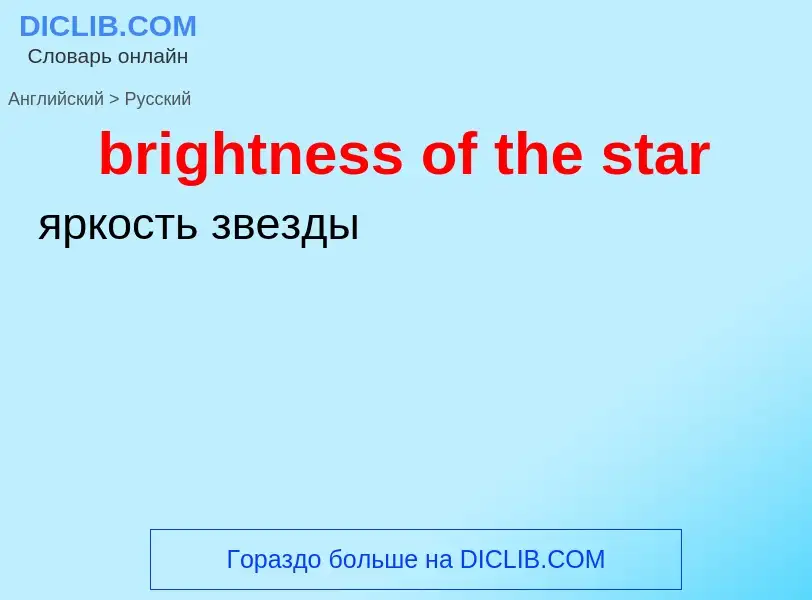Tradução e análise de palavras por inteligência artificial ChatGPT
Nesta página você pode obter uma análise detalhada de uma palavra ou frase, produzida usando a melhor tecnologia de inteligência artificial até o momento:
- como a palavra é usada
- frequência de uso
- é usado com mais frequência na fala oral ou escrita
- opções de tradução de palavras
- exemplos de uso (várias frases com tradução)
- etimologia
brightness of the star - tradução para russo
ботаника
хустония голубая (Houstonia coerulea)
птицемлечник жестковолосый (Ornithogalum hirsutum)
птицемлечник зонтичный (Ornithogalum umbellatum)
Definição
Wikipédia
The solar luminosity (L☉), is a unit of radiant flux (power emitted in the form of photons) conventionally used by astronomers to measure the luminosity of stars, galaxies and other celestial objects in terms of the output of the Sun.
One nominal solar luminosity is defined by the International Astronomical Union to be 3.828×1026 W. This does not include the solar neutrino luminosity, which would add 0.023 L☉, or 8.8×1024 W, i.e. a total of 3.916×1026 W (the mean energy of the solar photons is 26 MeV and that of the solar neutrinos 0.59 MeV, i.e. 2.27%; the Sun emits 9.2×1037 photons and as many neutrinos each second, of which 6.5×1014 per m2 reach the Earth each second). The Sun is a weakly variable star, and its actual luminosity therefore fluctuates. The major fluctuation is the eleven-year solar cycle (sunspot cycle) that causes a quasi-periodic variation of about ±0.1%. Other variations over the last 200–300 years are thought to be much smaller than this.

 (1814).png?width=200)



![A memorial to [[John Stafford Smith]] in [[Gloucester Cathedral]], [[Gloucester]], England A memorial to [[John Stafford Smith]] in [[Gloucester Cathedral]], [[Gloucester]], England](https://commons.wikimedia.org/wiki/Special:FilePath/JohnStaffordSmith01.jpg?width=200)
![Defence}} of Fort M'Henry" poem. It is now on display at the [[Maryland Historical Society]]. Defence}} of Fort M'Henry" poem. It is now on display at the [[Maryland Historical Society]].](https://commons.wikimedia.org/wiki/Special:FilePath/KeysSSB.jpg?width=200)
![''O'er the ramparts we watch'' in a 1945 [[United States Army Air Forces]] poster ''O'er the ramparts we watch'' in a 1945 [[United States Army Air Forces]] poster](https://commons.wikimedia.org/wiki/Special:FilePath/Oer the ramparts we watch.jpg?width=200)
![Star-Spangled Banner]]" that inspired the poem Star-Spangled Banner]]" that inspired the poem](https://commons.wikimedia.org/wiki/Special:FilePath/Star Spangled Banner Flag on display at the Smithsonian's National Museum of History and Technology, around 1964.jpg?width=200)

, W. Lafayette Avenue and Eutaw Place, Baltimore, MD 21217 (37035175462).jpg?width=200)
![Crowd performing the U.S. national anthem before a baseball game at [[Coors Field]] Crowd performing the U.S. national anthem before a baseball game at [[Coors Field]]](https://commons.wikimedia.org/wiki/Special:FilePath/Usnationalanthemcrowd.jpg?width=200)
